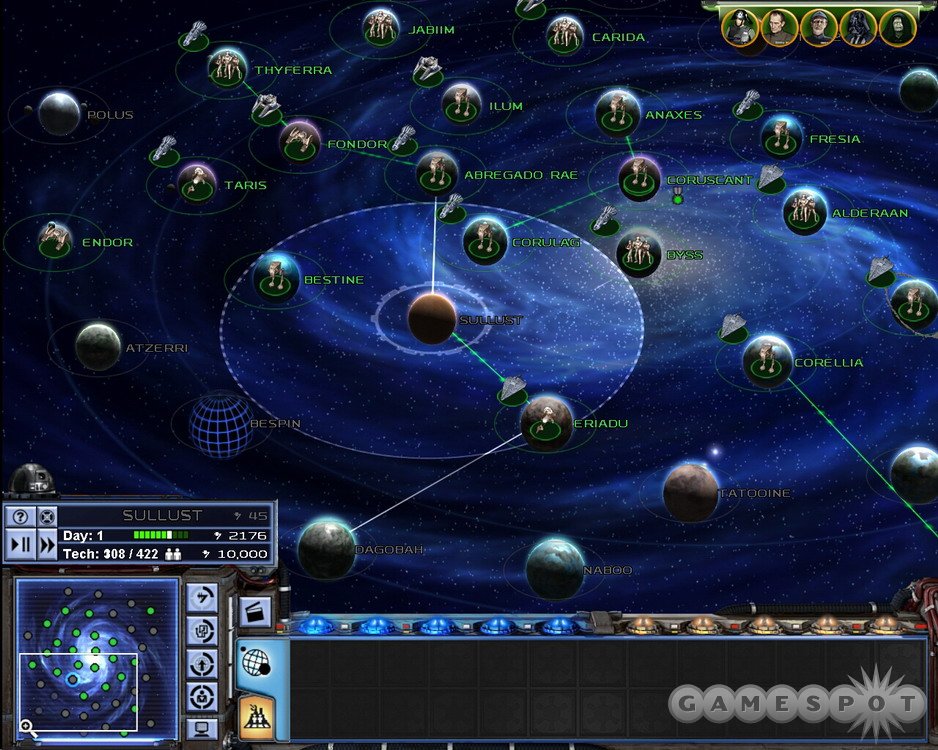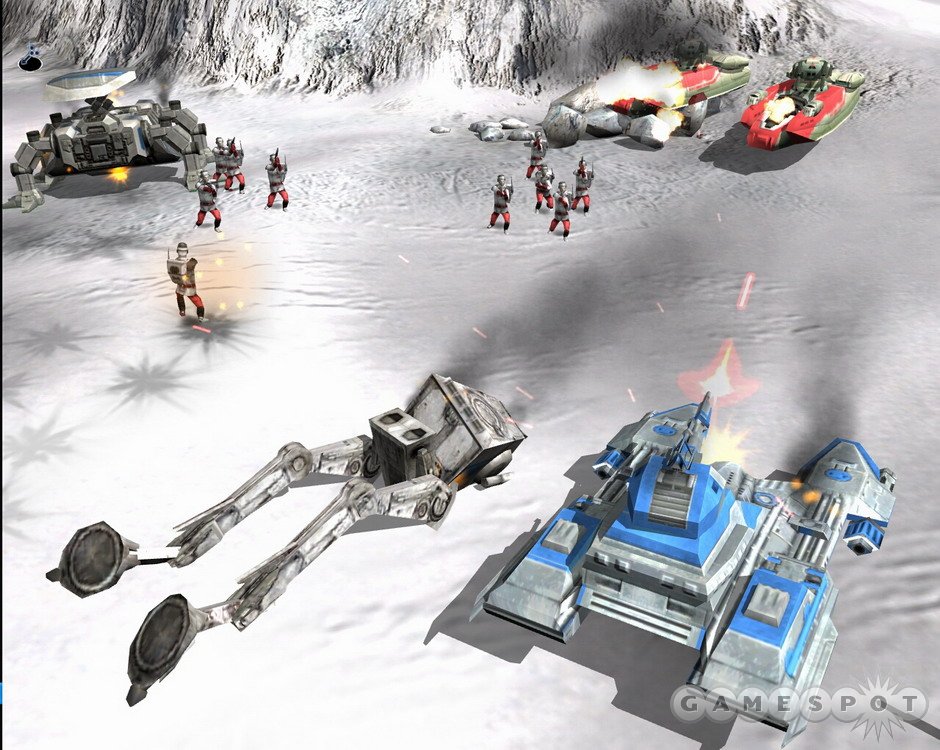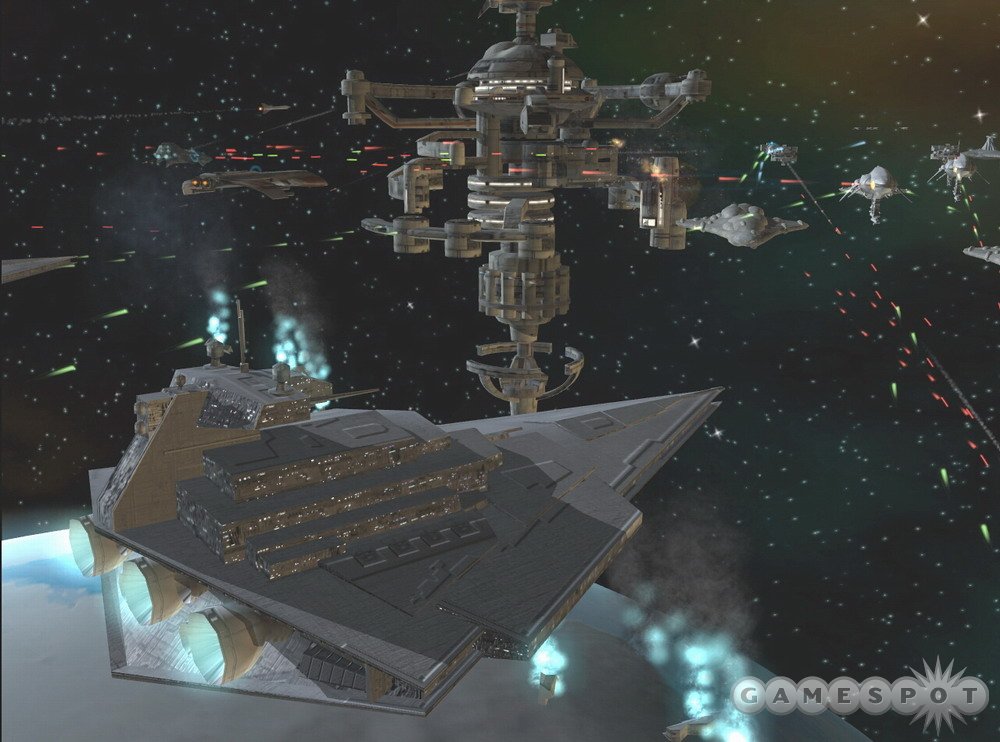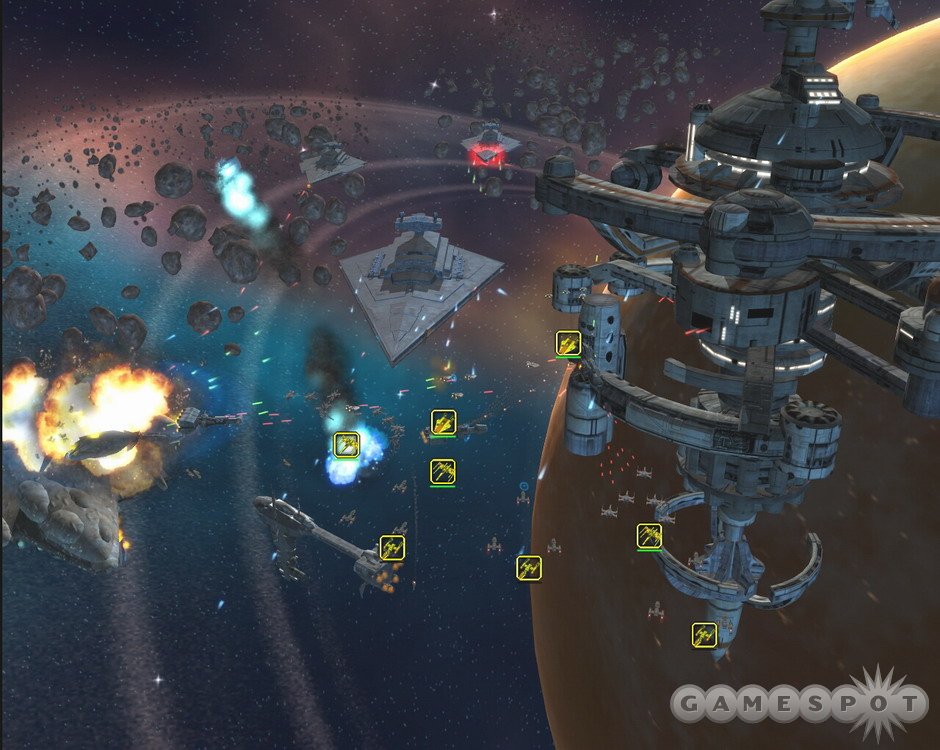Star Wars: Empire at War Designer Diary #3 - Skirmish on Land and in Space
Multiplayer designer Chris Rubyor returns to give us the details on the two new skirmish modes to be found in this Star Wars real-time strategy game.
By now, you've probably had a chance to check out the single-player demo of Star Wars: Empire of War that debuted on GameSpot this week. Now that you've got your taste of the single-player game and seen all the interesting and innovative new forms of gameplay, you may be wondering what's in store for the skirmish mode. Chris Rubyor, the game's multiplayer designer, was kind enough to fill in the details in our latest designer diary.

Skirmish, Star Wars Style
By Chris Rubyor
Multiplayer Designer, Petrogylph
Hey, gamers! This is Chris Rubyor again, with part two of our look into the multiplayer modes in Star Wars: Empire at War. Last time, I covered two-player galactic conquest, but now for the mode you can get up to eight people involved with: skirmish!
Skirmish was designed from scratch and incorporates a variety of new and traditional real-time strategy mechanics. Your very first skirmish multiplayer game is going to feel different than what you're used to. However, I can assure you that the new system is very easy to understand, and it usually takes just one game to become comfortable with the change.
We've come up with a design that focuses primarily on combat and unit tactics, but also allows the purchase of units and tech level during skirmish combat, something not found in galactic conquest or the single-player campaign. This new mode of play is fast-paced (similar to Command & Conquer or a Warcraft-style game), but reduces the amount of base micromanagement that you have to worry about.
Keep in mind that skirmish combat requires two separate designs to accommodate for planetary combat and space battles. Therefore, ground and space are essentially treated and balanced like separate game modes.
Our ground skirmish design called for preplaced building pads. This is important to understand, as there is no real base-building mechanic other than rebuilding a destroyed structure. These pads each fill a specific role and allow you to requisition units for battle. An example would be something like selecting a heavy factory and clicking on a heavy tank icon in the interface. Our unit-build system is still similar to a traditional real-time strategy game--we just use it in a different way.
Unlike in traditional real-time strategy games, where units appear out of structures, in Empire at War we bring our units to battle through our reinforcement system. When units are requisitioned, they go into a reinforcement pool. At any time, you can access this pool of units and bring them into battle. There is one catch: Units must be brought into battle at reinforcement-point locations. Reinforcement points are vital in gaining ground on your opponent. Without them, it becomes very difficult to get units to strategic locations in good time.

We needed a way to unlock units, so we designed a simple tech-level system. Tech level is achieved through an upgrade tied to a command center. When a higher tech level has been reached, new units and upgrades are made available. If a command center is destroyed, the tech tree will collapse to tech level 1. That means all upgrades and units available from the higher tech levels are lost. You must tech back up. Upgrades work similarly. If the structure they are tied to is lost, the upgrade must be repurchased for it to come back into play.
Since the economy is controlled from a galactic level in the single-player campaign and the galactic conquest mode, we had to design a new tactical economy system for multiplayer. So we came up with neutral mining facility pads, which are scattered throughout the battlefield. When mining facility pads are captured, they generate necessary cash to fund your war effort--unless the enemy destroys them!
Destroying Star Destroyers
Now, we have to deal with combat in outer space. Space skirmish shares some similarities with ground-skirmish combat, but not many. Instead of build pads, each side receives a space station, which can be upgraded to produce better units, just like a land-based command center. With each new upgrade, space stations receive more health, armor, and defensive hard points.
Because each side only has one space station, we had to figure out a way to make them tactically interesting and tough to take down, so we lean heavily on our hard-point system. On each station, there are key hard points, such as a communications array (which shuts down the radar map if destroyed) and shield generators (which recharge a station's shield). Other hard points might include the usual array of turbolasers, ion cannons, proton torpedoes, and concussion missiles. Destroying these hard points slowly but surely weakens the defensive capabilities of a station. It also brings the station closer to destruction, as each hard point is tied to the station's health system.
Similar to land skirmish, players draw upon their reinforcement pools to bring units onto the battlefield; however, they are not tied to reinforcement points when in space. Space skirmish lets players bring in reinforcements in areas where the fog of war has been revealed.
But how do we make space battle unique? In order to achieve this, we designed a variety of specialized asteroid fields (which damage larger ships), nebulas (which reduce shields), and space junk that hides turrets and creates hyperspace barriers. No two space areas look or play exactly alike. Similar to mining facility pads in land skirmish, asteroid miners spread throughout the map enhance the economy system in space. Claiming an asteroid miner increases the rate of funds. But again, make sure you protect it.
Now, there's team play. I mentioned earlier that we designed our skirmish multiplayer component to be more team-centric. Well, I saved the best for last. In most real-time strategy games, each player on a team has his or her own area for base construction, resource collection, and defense. In Empire at War, we broke the mold and wanted to try something different. There are only ever two bases on a map at any time (one rebel, one imperial).
Right now you are probably saying, "What's up with that?"
We utilize a unique system in which all buildings are shared among teammates. This does not mean that you have to wait in line to build units, or that you only receive a percentage of the cash from miners. Rather, each player has his or her own separate unit queues and income pools.
How does this work, you wonder?
During team play, if the same structure is selected by everyone on the team, they have the freedom to build the units they want. Each player has his or her own unique reinforcement pool that he or she can pull units from to bring into battle. When a mining facility is activated, credit delivery is distributed equally (100 percent) across each player's economy pool. Upgrades are shared among the team. When an upgrade or tech level is under production, an icon will appear on the right-hand side. This feature keeps all team members informed of what upgrades are currently in production.
This brand new gameplay mechanic creates a whole new tactical element in which everyone on the team must work together to protect their base and gain ground on the enemy. The game is over when one side has been defeated. The humiliation factor of a teammate being singled out and booted from the game is a thing of the past. The Petroglyph design team believes that team play is quickly becoming the favorite way to play real-time strategy games online, so expect to see more features and fun ways to play in future games.

Finally, some closing thoughts. As we get closer to the ship date, our multiplayer skirmish mode has proved to be an extremely valuable tool for balancing units, abilities, and upgrades. Though it is a lot of work, the entire team at Petroglyph cares very deeply about Empire at War, so at any time, you can walk down the halls and find artists, programmers, and designers playing multiplayer games and submitting feedback. We'll be doing this until the game ships, as we want to ensure the game is top-notch and fun.
For you multiplayer nuts, you can look for me online when Empire at War ships (Delphi-PG). I'll be challenging fans to some intense rounds of multiplayer combat. See you online!
Got a news tip or want to contact us directly? Email news@gamespot.com
Join the conversation